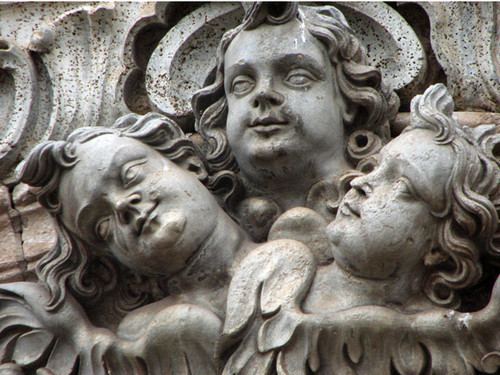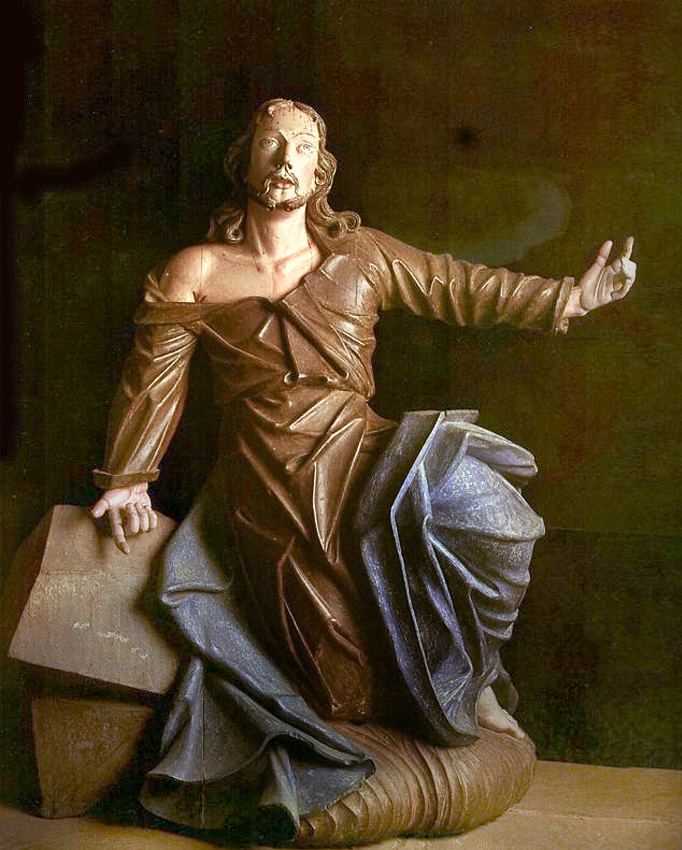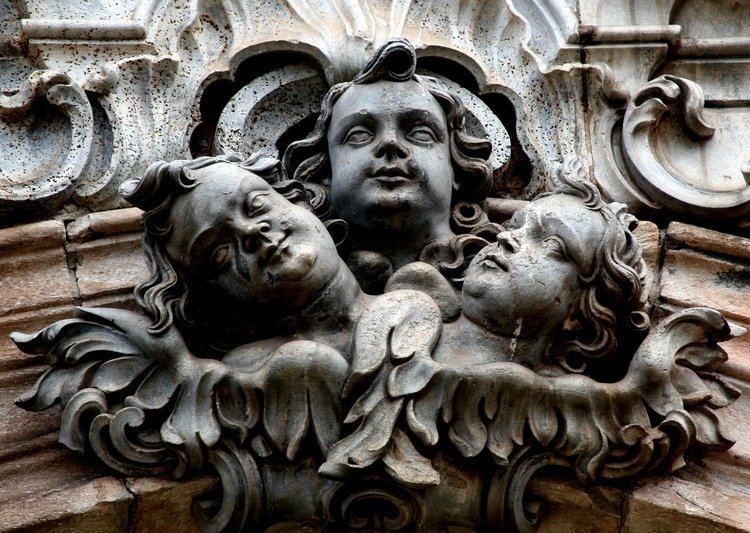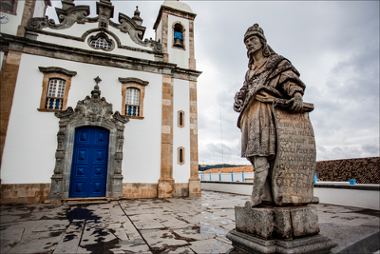Name Antonio Lisboa Nationality Brazilian Period Baroque Role Sculptor | Movement Baroque Known for Sculpting Children Manuel Francisco Lisboa | |
 | ||
Full Name Antonio Francisco Lisboa Born August 29, 1738 ( 1738-08-29 ) Vila Rica, Minas Gerais, Portuguese Colony of Brazil Died November 18, 1814, Ouro Preto, Minas Gerais, Brazil Structures Santuario do Bom Jesus de Matosinhos, Church of Saint Francis of Assisi Parents Manuel Francisco da Costa Lisboa, Isabel Similar People Manoel da Costa Ataide, Tiradentes, Machado de Assis, Francis of Assisi, Antonio Vieira | ||
Luiz antonio gasparetto incorpora antonio francisco lisboa o aleijadinho
Aleijadinho, stands for little cripple in Portuguese, (b. Antônio Francisco Lisboa; 1730 or 1738 – November 18, 1814) was a Colonial Brazil-born sculptor and architect, noted for his works on and in various churches of Brazil.
Contents
- Luiz antonio gasparetto incorpora antonio francisco lisboa o aleijadinho
- The Twelve Prophets at Congonhas
- The Passion Figures at Congonhas
- Controversy
- References

Born in Vila Rica (Rich Town), whose name was later changed to Ouro Preto (Black Gold), Minas Gerais, Brazil, in 1738 (sometimes said to be in 1730) he was the son of Manuel Francisco da Costa Lisboa, a Portuguese man and his African slave, Isabel. His father, a carpenter, had immigrated to Brazil where his skills were so in demand that he appears to have been elevated to the position of architect. When Antônio was young his father married and he was raised in his father's home along with his half siblings. It was there he is presumed to have learned the fundamentals of sculpture, architecture and the combination of the two. Antônio first appears as a day laborer working on the Church of Our Lady of Carmel in the town of Ouro Preto, a church designed by his father.

Within a very short time he had become a noted architect himself and had designed and constructed the Chapel of the Third Order of St. Francis of Assisi in Ouro Preto. He had also executed the carvings on the building, the most notable being a round bas-relief depicting St. Francis receiving the stigmata.

In 1777 he began to show signs of a debilitating disease, probably leprosy or possibly scleroderma, and he received the name "o Aleijadinho", "The Little Cripple." Although disfigured and disabled, popular belief holds that he continued sculpting with a chisel and hammer tied to his fingerless hands.

Eventually he became more and more reclusive, working mostly at night. When he did go out in public, he would be carried through the streets in a covered palanquin by his slaves/assistants.
The Twelve Prophets at Congonhas
His crowning achievement was the Twelve Prophets at the Sanctuary of Bom Jesus de Matosinhos at Congonhas. A wealthy businessman, Feliciano Mendes, had built the church to fulfill a vow made while he was desperately ill. Between 1800 and 1805 Aleijadinho sculpted the twelve soapstone figures by having his assistants strap his hammer and chisels to what remained of his hands, which did not at this point include fingers. Since he no longer had feet to stand on he had pads strapped to his knees up which he would climb the ladders needed to get him off the ground. The Twelve Prophets are arranged around the courtyard and stairway in front of the church.
The Passion Figures at Congonhas
At the bottom of the stairs is a long courtyard that is bounded by half a dozen pavilions. In each of the pavilions is a scene from the Passion of Christ. There are sixty-six life-sized figures carved in wood from 1780 to 1790, beginning with the Last Supper and ending with the Crucifixion. The main figures, Christ, Peter, James, John, the Good and Bad thieves, Mary Magdalene, and Mary, mother of Jesus are carved by Aleijadinho while the other figures, Roman soldiers, on-lookers and lesser figures were carved by his assistants. The figures were later painted by Manoel da Costa Ataíde, who also painted (1828) the ceiling of Lisboa's Church of Saint Francis of Assisi in Ouro Preto. One of the figures watching the crucifixion is believed to be a portrait (or self-portrait) of Aleijadinho.
Melo (see sources) writes that the prevailing religious ideals at that time were, "associated with the ideas of pain, acceptance of suffering and reflection on the passion of Christ through visual reminders of His wounds."
He died on November 18, 1814 and was buried in the Church of Our Lady of Conception of Antonio Dias under a wooden floor section with his name carved on it.
Controversy
Against: There is some debate as to whether Aleijadinho actually existed. The theory that Aleijadinho was a myth was proposed by Augusto de Lima, Jr., who suggested that Aleijadinho was invented by Rodrigo Bretas in his book "Traços Biográficos de Antônio Francisco Lisboa". This theory relies on the notion that there were no references to Aleijadinho until this book was written.
Recently published research further challenges the traditional biography of the artist. Faced with the lack of documentary evidence, the author identifies Antônio Francisco Lisboa as a poor sculptor in 18th century Vila Rica (Ouro Preto original designation), but not a victim of the deformities that would have earned him the nickname. His work, of much smaller scope than usually attributed, had to be confined to Ouro Preto and surrounding areas where he lived all of his life. There is no evidence for his work as an architect and even his parentage is in doubt. Instead, Guiomar de Grammont proposes the figure of a talented maker of religious imagery, a trade possibly shared with other artisans in the same workshop. In her interpretation, the Aleijadinho myth was created by the Rodrigo Bretas biography and reinforced over time by modernist intellectuals who saw in this character a symbolic founder of an indigenous Brazilian culture.
Supporting: Doubts about Aleijadinho's actual existence have been countered by evidence brought up by researcher Felicidade Patrocínio, who listed over 30 documented works, including the masterpieces on which his fame was built: the 12 apostles and the cycle of the Via Crucis at the Sanctuary of Matosinhos.
